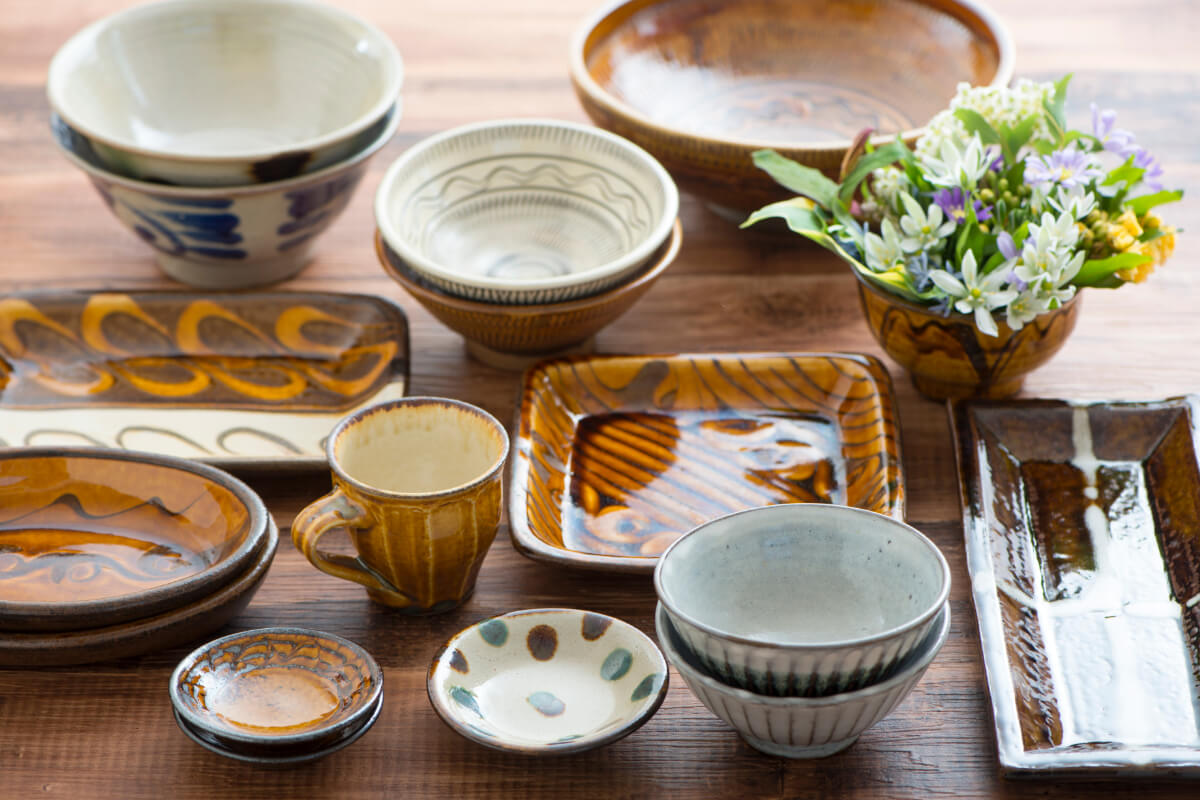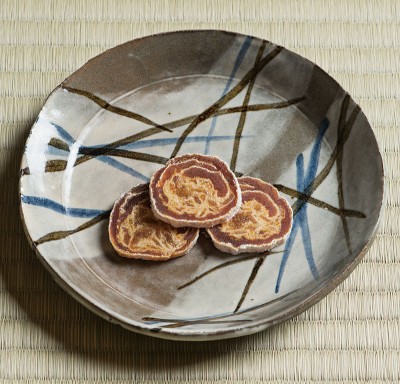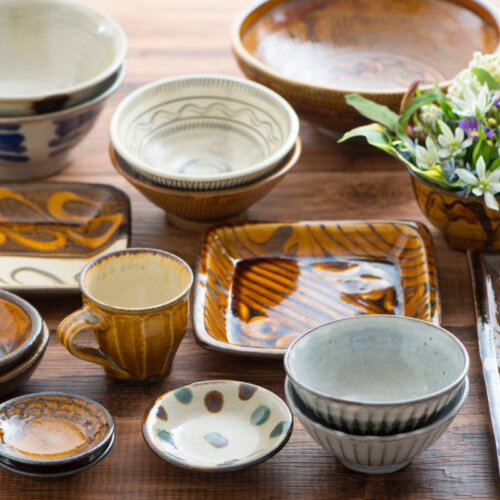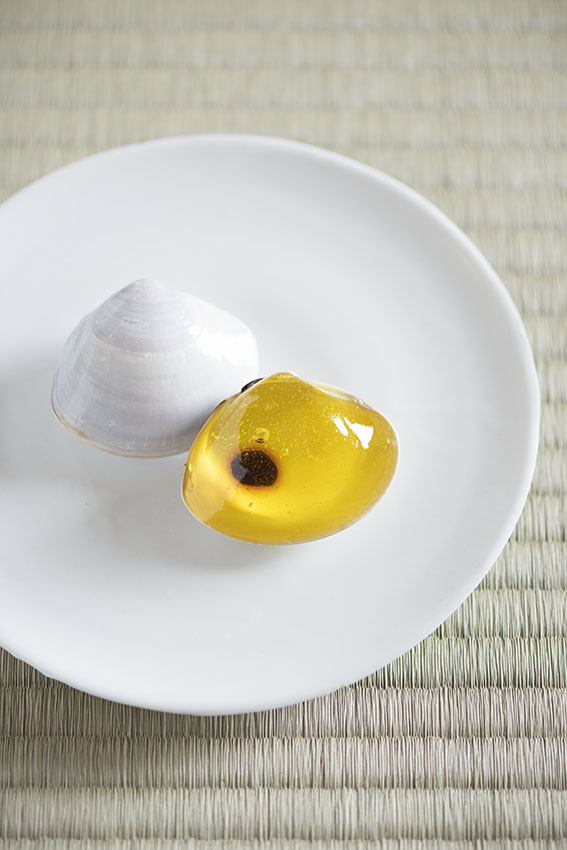
Mari Hashimoto's Enjoying Vessels with sweets

Vessel: Sabie Gosunzara by Shion Tabata.
Sweet: Kakisuga by Sohonten Kakisuga.
Photo by Tetsuka Tsurusaki. Cooperation: Kashima Arts.
Nothing makes us more keenly aware of autumn’s progress than the persimmon, this fruit that adds color to hilly countryside landscapes with its intense vermillion. The cultivation of persimmons in Japan goes back to ancient times. The fruit even received mention in the Shosoin monjo, a collection of documents stored in Shosoin, the eighth-century storehouse at Todaiji Temple in Nara. Persimmons were not only eaten raw but were put to use in various other ways in the lives of the Japanese of old. The fruit’s astringent juice was used to create a preservative and waterproofing agent, persimmons that had fallen off the tree were fermented to create persimmon vinegar, while the tree’s delicate, black heartwood was used as timber to create furniture. Astringent varieties of persimmon are not palatable raw and are usually dried. Such varieties are high in tannin, which is what gives them their astringency. As the fruits dry, these tannin-containing substances transform from solvent into insolvent, removing the astringency and leaving only sweetness. In past times, when sugar was a luxury commodity that common folk had no hope of getting hold of, the sweetness provided by these astringent varieties of persimmon was much loved. Such “sweets” could not be enjoyed any other way, which is to say that we could consider this the origin of wagashi, Japanese confectionary. On this plate, three slices of kakisuga, a confection created by wrapping diced yuzu* peel in dried persimmons, complete with the natural sugars that form on their surface. This famous confection is very much Nara-style, with its unpretentious combination of sweetness and acidity that reminds us of the spirit of the hills in autumn. Adding the mood of desolate fields is a sabie gosun-zara (rusty-colored small plate) created by the ceramic artist Shion Tabata in a style that imitates and pays homage to the work of Ogata Kenzan.
Perhaps because of our school-based education that, day in day out, over-emphasizes the importance of individuality and being true to oneself, the outlook for *utsushi-work is not great in the modern-day world of ceramic art. The imitation of existing works was once standard cultural practice in Japan, however. Artists imitated existing works in order to understand the great artists who had worked before them and had produced masterpieces, and to be able to produce work that would eventually transcend that of their predecessors. As a potter, Tabata is fascinated by the classics and has worked hard to make the object of that fascination something her own. After working at an antique shop, she commenced her ceramics career at the age of forty-five. Precisely because of this late start, she chose the seventeenth-century potter Ogata Kenzan as her “teacher” due to his mastery of diverse techniques and the rich variety of forms that he created. Tabata went through repeated trial and error to reproduce, to the maximum extent possible, the same techniques that were used in Kenzan’s age, be it with regards to the clay, the glaze, or the kiln. She is now well-known as an artist who works in the style of Kenzan and her pieces are used in prestigious restaurants serving Japanese cuisine. Because of Tabata’s work, we can enjoy this combination of pottery and sweets in a way that would not have been in at all odd in Kenzan’s day.
*yuzu: a citrus fruit with a highly aromatic zest
*utsushi-work: works that are created in the same style as an older, usually famous artist’s work
関連




